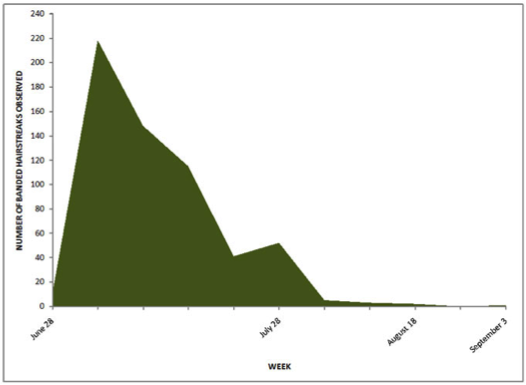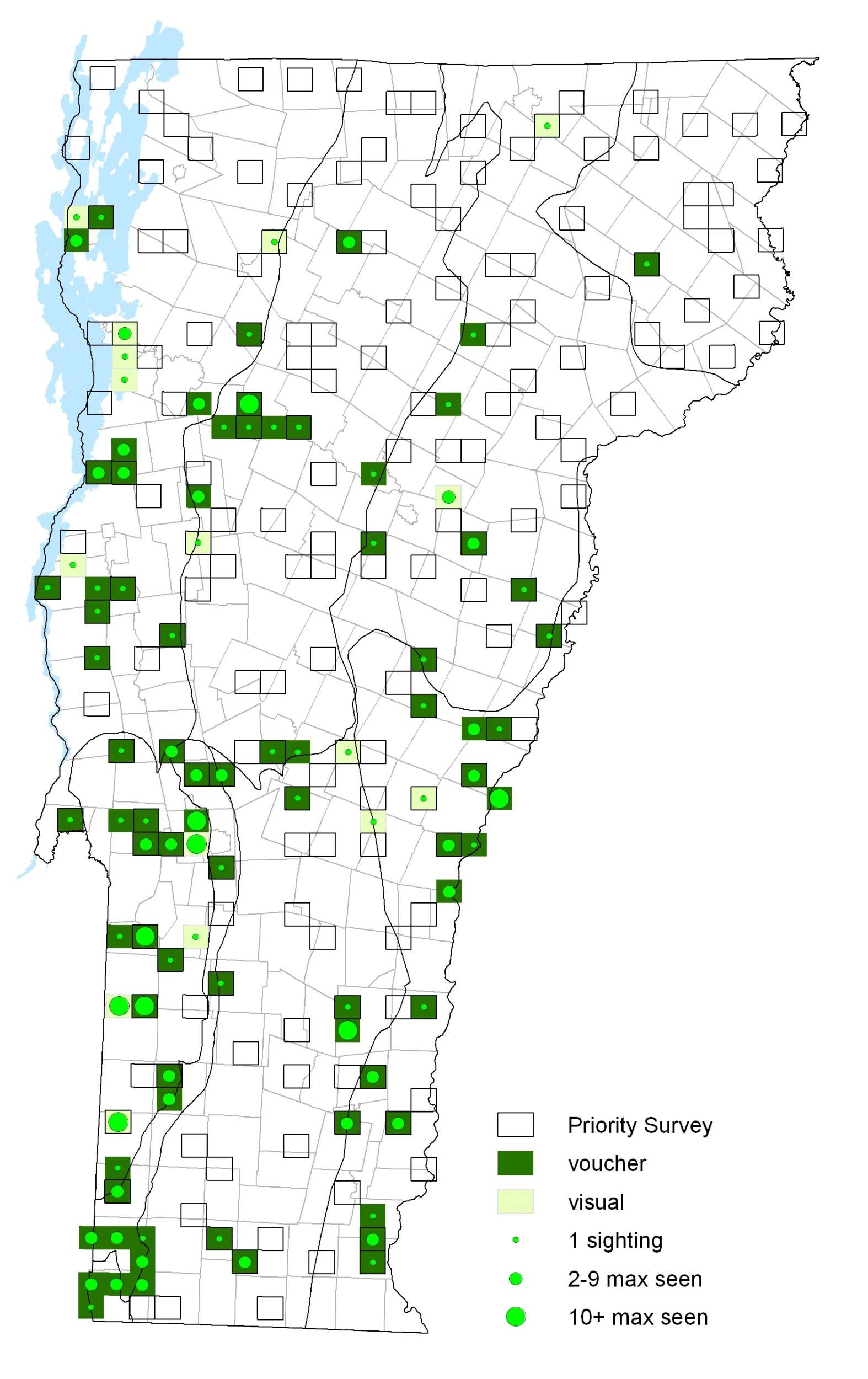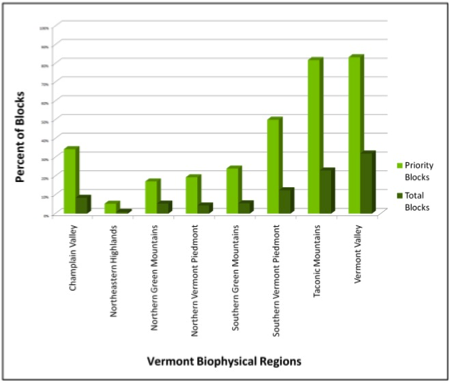|
Resident Conservation Status North American Range |
The Banded Hairstreak is the most common of our eastern Satyriums, some years found in the thousands. Males of this species perch during the day and are fiercely territorial and will engage in lengthy aerial fights with other males. Eggs are laid on twigs of hostplants and hatch the following spring. Caterpillars feed on catkins and leaves.
Identification
Hindwing has one long and one short tail. Upperside of both sexes dark brown. Underside of hindwing dark brown with postmedian band of dark dashes edged in white. Blue tail-spot not topped with orange.
Flight
A single flight. Extreme dates: 25 June 2007 in West Haven (R. Pilcher) and 3 September 2003 in Grand Isle (D. Hoag).
Distribution and Habitat
Commonly found throughout Vermont, except rare or absent in the northern tier and the Green Mountains. The Banded Hairstreak prefers mixed forests and edges and nearby open areas where they are often observed nectaring. Adults nectar at a wide variety of flowers including dogbane (Apocynum), milkweed (Asclepias) and New Jersey Tea (Ceanothus americanus). Hostplants include oaks (Quercus), walnut (Juglans), and hickory (Carya).







